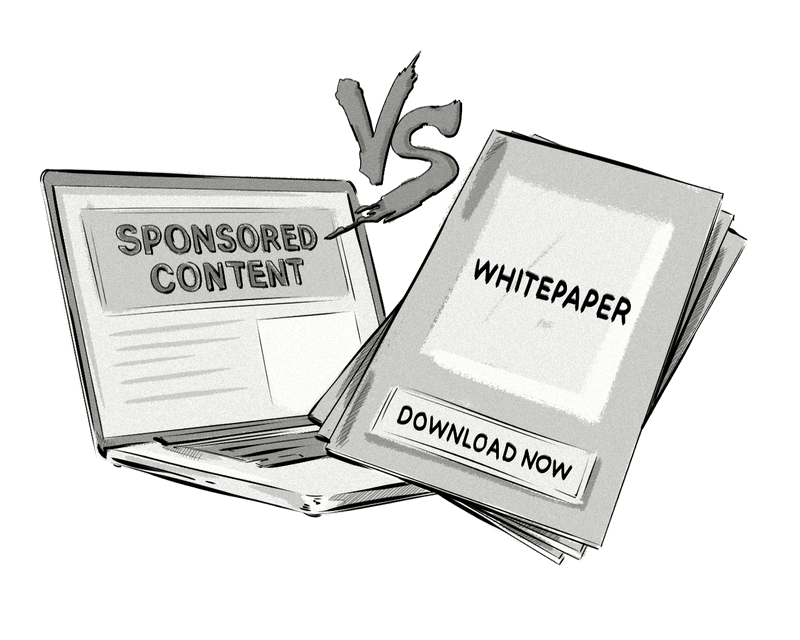Native advertising and content marketing – both could lay claim to one of marketing’s hottest buzzwords: “Content is king.” And because of that both are enjoying massive popularity.
Forbes reports that 76% of B2C marketers and 88% of B2B marketers use content marketing and Business Insider estimates that native ad revenue in 2016 in the US will reach almost $14 billion.

However, despite what some people think, native advertising and content marketing ARE NOT one and the same.
Both have their own specific uses as well as their own challenges and opportunities – both from a technical and business point of view.
First, a brief definition.
Native advertising vs. Content marketing
Native advertising and content marketing share one thing in common – a focus on content that is inherent appealing and provides some value (most often entertainment or educational) for those who engage with it.
The defining aspect of native ads is that they are designed to fit contextually with the non-paid content around them. According to the IAB, native ads can fall into one of six broad categories including:
- “Recommended” articles/videos placed on a reputable publisher’s site
- Promoted listings (often included “in-line” as a part of a wider list)
- Contextual banners (banner ads that match closely the content of the page they are shown on)
Content marketing, on the other hand, utilizes an even wider range of options:
- Ebook/whitepapers/case studies available for download (after submitting an email address)
- Branded YouTube channels
- Branded Slideshare presentations
- Blogs/social media posts

How is native advertising different from content marketing?
Simply put, native ads are pieces of content for which the advertiser pays. In this way, a blog post innovation in heavy machinery that is featured on a company website would be considered a piece of content marketing.
However, if the same company paid a well-known publisher such as CNN to place the same post on a page containing a news article about manufacturing, it would be considered a native advertisement.
There are, of course, guidelines about marking native ads (or sponsored content, as it is sometimes called.) Unfortunately, they are often ignored.
Another difference is also that pieces of content marketing usually have some inherent value – and can be classified as useful in some way. So drawing on the examples above, an e-book or whitepaper may help its readers learn about a new technology. An infographic could present a range of uses for a new product. Podcasts or YouTube videos feature experts (or ordinary people) who have experienced a product or service in some way and share their insights).
It’s not hard to see why both content marketing and native advertising – whether for B2B or B2C marketing – are popular:
- They are less intrusive and less overt in their message, leading to higher conversion rates
- They are less susceptible to ad blockers
- They provide more value to customers and often give advertisers more space to convey the benefits of their products or services
- They have the ability to boost a brand’s reputation depending on their placement and content
So does this mean that both approaches are equal?
Different tools, different opportunities
The main difference between native ads and content marketing is the way in which the content is distributed. And this can have a significant impact on the effectiveness of each approach.
With content marketing, advertisers are responsible for maintaining their own channels of distribution and pushing content across them. This may include:
- A company blog
- A brand’s YouTube channel
- Social media accounts
- Content distribution via partnerships & guest posting
Focusing on content marketing has several advantages for companies, both B2C and B2B:
- More control over context and messaging
- Impact on SEO and organic traffic building
- Does not require a media budget. Usually content marketing only a one-time investment in creation (once published it starts to pay off, so no need to top up your marketing budget later on)
- Creates long term benefits & effects for the company (because it stays on the web forever and is not a part of one time marketing campaigns)
- Creates brand credibility and positions the brand as an expert in a field
On the other hand, companies are often hampered by the need to first build the reach of their channels in order to gain a wide enough audience. This also makes it more difficult to scale campaigns quickly and effectively.
- Can cost significantly more, on average over $50 000 for campaigns on top publisher sites
- Are harder to match to surrounding content in real time
- Are less closely connected to a brand’s message and image since they are created to closely match surrounding publisher content
- Benefits and effect last as long as the campaign itself – does not create long term value
Nevertheless, native ads hold one great advantage over content marketing: their ability to be served in conjunction with programmatic advertising platforms.
This means wider reach and scalability as well as more direct insights into ROI, which can be somewhat harder to measure with content marketing.
Already the range of native ad networks has grown exponentially. Some of the key players are:
But the native ad landscape – if the numbers are to be believed – will only continue to grow, meaning the inventory is likely to increase and prices come down, especially as the marketplace opens up with more and more competition.
There is another aspect as well: as the adoption of data management solutions grow and advertisers and publishers learn better how to use a DMP for personalizing content, the mechanisms to drive an even smoother user experience with native ads will take hold.
All of this contributes to the dynamic growth of native advertising and points to greater long-term potential.
But don’t expect content marketing to go away – it will still serve brands well, but just in a different role.
Questions, queries, comments?
Join the conversation about this post on Facebook, Twitter, and LinkedIn.








